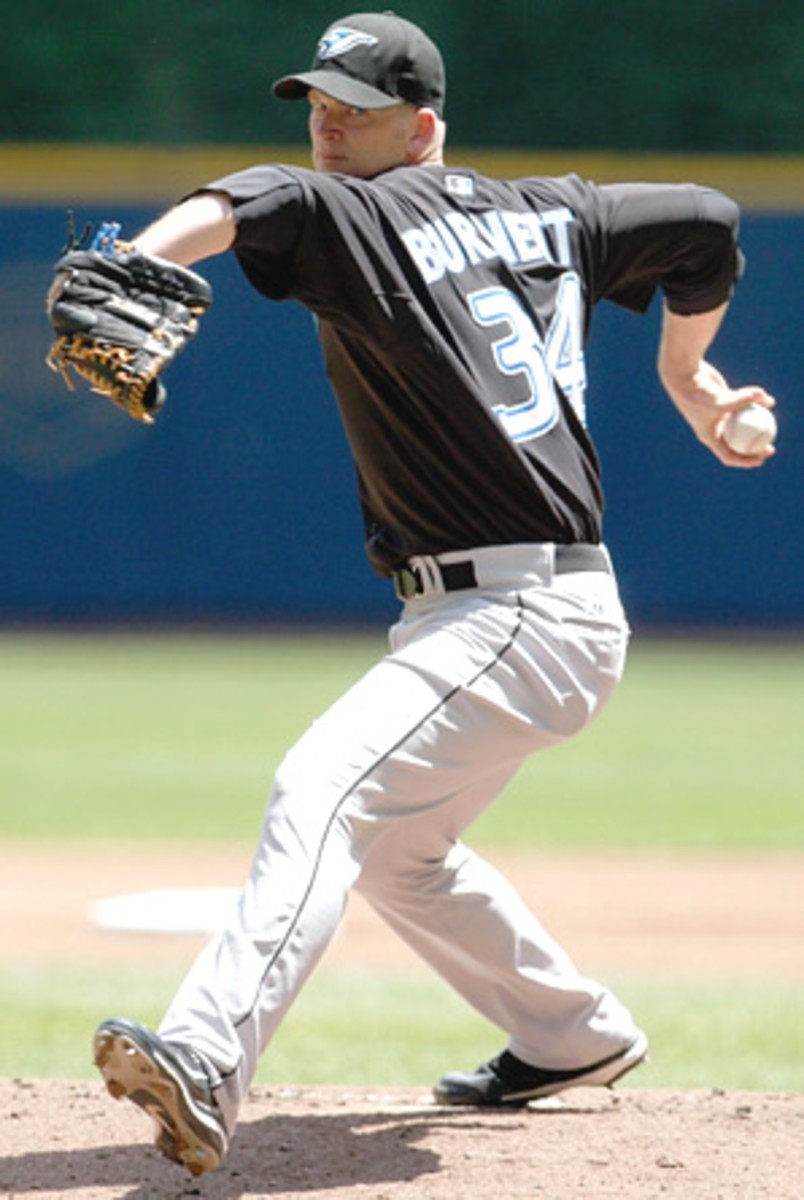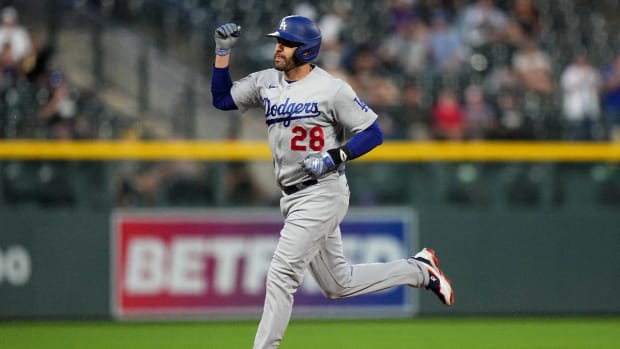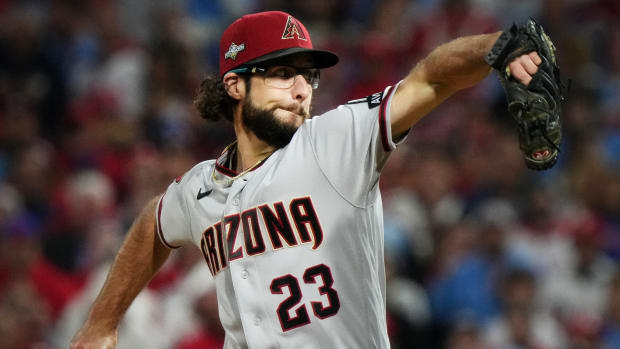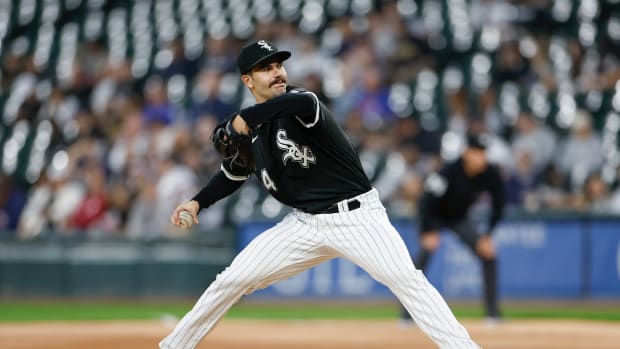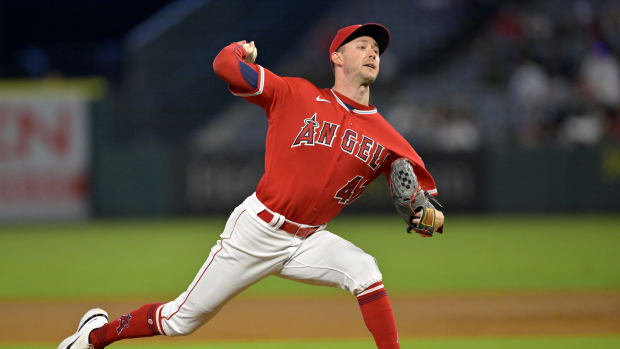Yankees could get burned by A.J.
There are two reasons for that. First, Sabathia's deal comes with an opt-out clause in which the hurler can forego the final four years of his contract and re-enter the market. While the fine print of his deal hasn't been reported, and while many view the presence of the clause as an unmitigated negative for the Yankees, the terms on both sides of that option suggest a flat pay rate of $23 million per year, arguably telegraphing the pitcher's intention to walk away, since the bet is that he'll increase his annual value over the course of that three-year stretch and face a more favorable economic climate than the current recession. Burnett's deal contains no such clause, though ironically, he became a free agent by exercising an opt-out clause in his five-year, $55 million deal with the Blue Jays. The Yankees are on the hook for all five years of his new deal unless they trade him.
Second, and of more relevance performance-wise, Sabathia has proven himself to be a durable workhorse during his eight big league seasons, reaching the level of 30 starts seven times, never throwing less than 180 1/3 innings, and making only one trip to the disabled list, that due to a groin strain in 2006. Burnett, on the other hand, has reached 30 starts just twice in 10 seasons -- both times prior to entering the market as a free agent -- and has topped 180 innings just three times. He's got a long history of arm problems, one that includes Tommy John surgery in 2003 and more than four months on the DL in 2006 and 2007, the former for elbow pain caused by the breakup of scar tissue from his surgery, and the latter for a shoulder strain. Both times, he came off the DL for less than a week before returning, furthering the perception that he was unwilling to pitch through any discomfort. Burnett "has often needed reassurance that he's healthy," wrote BP injury analystWill Carroll amid the pitcher's 2006 elbow woes.
Burnett's combination of fragility and perceived squeamishness calls to mind the darkest chapter of Yankee GM Brian Cashman's tenure, the two deals he inked at the 2004 winter meetings with a pair of injury-riddled pitchers coming off rare healthy, effective seasons, Carl Pavano and Jaret Wright. The Yankees just cleared the former's four-year, $39.95 million deal from the books this fall. A teammate of Burnett's with the Marlins from 2002 through '04, Pavano signed with the Yankees in December '04 after a season in which he'd gone 18-8 with a 3.00 ERA in 222 1/3 innings -- figures that were all career bests, but representing just the second time the pitcher had been healthy and effective over a full season. Pavano made just 19 starts in his four years in the Bronx, and his litany of injuries reached such an absurd level that his initials came to stand for "Can't Pitch." Wright was coming off his first healthy and effective season since 1998; he managed just 43 starts over the next three years (the last one in Baltimore) and was rarely effective. Suffice it to say that the Yankees' recent record of banking on pitchers with sketchy track records isn't a good one.
To be fair, Burnett is a good pitcher when healthy. Though he had never won more than 12 games prior to last season -- a function of his lack of availability and the occasionally meager offensive support he had received -- his ERAs have been 13 percent better than the park-adjusted league average over the past four years, which ranks 16th among pitchers with at least 700 innings in that span. His 4.07 ERA this past year was inflated by about half a run thanks to his .318 Batting Average on Balls In Play, 18 points above league average.
Burnett's strikeout rate over those four years, 8.89 per nine innings, is even better, ranking third among that group behind Cy Young winners Jake Peavy and Johan Santana. As noted in discussing Sabathia, strikeout rate is the key indicator of a pitcher's future success because it provides the window into his ability to fool hitters with his offerings. A pitcher's strikeout rate generally declines as he ages, but a high strikeout rate gives him more headroom before he does so. To the extent that the Yankees must look five years into the future on Burnett's deal, his strikeout rate offers some assurance of future effectiveness -- if not availability.
Furthermore, strikeouts decrease a pitcher's reliance on his defense, and since the Yankees were one of the majors' least efficient teams in the field, ranking 25th out of 30 teams in raw Defensive Efficiency (.682), they've done well for themselves this week: Burnett's 231 strikeouts led the American League and ranked only behind Sabathia's 251 (compiled across both leagues) and Tim Lincecum's 265. Once upon a time, the Yankees staff ranked among the league's strikeout leaders. From 1998 through '03, when they won five pennants and three World Championships, they were never lower than third in the AL in that category. Since then, they've cracked the top three once, and haven't won a single pennant:
Surprisingly, they did finish in the top three in strikeout rate in '08, despite a revolving-door staff that saw 13 pitchers make at least one start, and endured season-ending injuries to Chien-Ming Wang and Joba Chamberlain. With staff strikeout leader Mike Mussina having retired, and second-ranked Andy Pettitte unsigned, the Yankees clearly needed to find other high-strikeout pitchers to replace them. Particuarly so, given that their defensively inferior keystone combination of Derek Jeter and Robinson Cano appears set in stone for the foreseeable future.
The signing leaves the Yankees committed to four starters: Sabathia, Burnett, Wang and Chamberlain. Reports earlier this week suggested they remained interested in a one-year, $10 million deal for Pettitte and might even be interested in a multiyear deal with free agent Derek Lowe. While those may have been bluffs designed to accelerate Burnett's decision between offers from the Yankees and Braves, it's now clear that at most one rotation spot is available to Phil Hughes and Ian Kennedy, two of the three young hurlers (along with Chamberlain) around whom Cashman structured the rotation last winter after bypassing a potential trade for Johan Santana.
That pair didn't win a single game between them in '08 while combining for a 7.45 ERA in 17 starts and dealing with injuries, and because of that, both pitchers' stock has fallen considerably. Regarding the former, once considered among the game's top pitching prospects, Baseball Prospectus' John Perrottoobserved from this week's meetings that the Yankees seem "willing to trade Phil Hughes, who other teams are starting to see as really nothing more than a No. 3 or No. 4 starter." If he's not traded, Kennedy may be; his name was said to surface in discussions for Brewers center fielder Mike Cameron last month.
With Burnett, even moreso than Sabathia, the Yankees had best make sure they cultivate adequate rotation depth behind him. Now that he's not pitching for a contract, it might only be a matter of time before Burnett winds up on the trainer's table or the disabled list, rekindling uncomfortable memories of fragile free agents past.






























